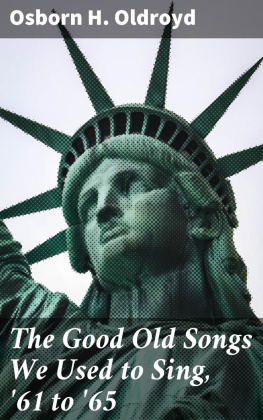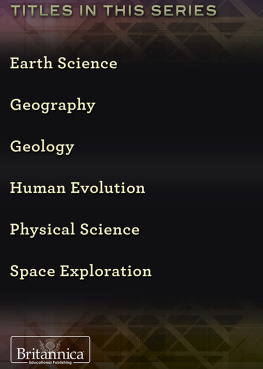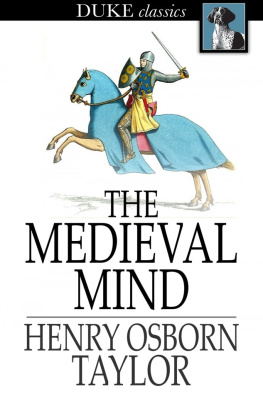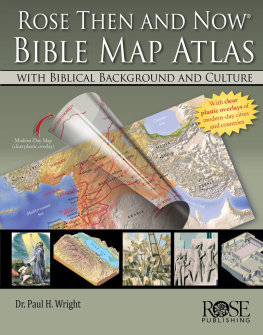H. S. Osborn
A Class-Book of Biblical History and Geography with numerous maps
Published by Good Press, 2019
EAN 4064066247515
CHAPTER IV.
THE LINEAGE OF THE PATRIARCHS.
Table of Contents
1. Ten generations are given, from Adam to the Flood, and the remarkably long lives of the Patriarchs have suggested to many the probability of error or misunderstanding. Some have supposed that each name represents a tribe, the lives of whose leading members have been added together.
2. But as to all these opinions it must be remembered, First, that the era from the creation of Adam to the Flood, 1,656 years, is to be divided by the number ten, the number of the Patriarchs, which would require an individual length of life much longer than that enjoyed at the present day; and, Secondly, no scientific reasons can be offered why human life should be limited in duration to its present length. It varies now according to the contingencies of accident and disease, and old age itself may be only a modified form of disease and not essential to a human organism. A clock made to run twenty-four hours is expected to run down in about that time, but the clock-maker may, by adding one wheel, or to the length of the weight-cord, or by some other very simple rearrangement, make the very same clock run a week or a month. It is only a question of life, about which, as to its nature, we know little or nothing. Thirdly, as to the historic probability, it is a fact that traditions other than those of the Hebrew nation represent that in the earliest ages there was an enjoyment of exceedingly long lives. The chronology of Berosus, a Chaldan priest and historian, BC 279 to 255, gives to the ten Babylonian kings who in the earliest traditions of that people reigned before the Babylonian deluge 2,221 years, The earliest Aryan tradition states that the first man lived 1,000 years in Paradise.
Other nations have kept the same tradition of long lives in the earliest times, which nations could not have received the tradition from the Scriptures.
But there is a probability arising from the fitness of long lives, and that is seen in the necessity of a history which could thus be obtained by tradition when no written language existed. It will be seen that from Adam to the Flood tradition was delivered through only one person, so that Lamech could repeat to Noah what Adam had narrated to him of all the dealings of God in Eden and after the expulsion. Although Lamech lived during the lifetimes of all the Patriarchs down to the Flood, which took place 1,656 years after the creation of Adam, he himself was only 777 years old at death. Thus we see that tradition was more trustworthy then than at any time since.
Moreover, Shem lived nearly a century before the death of Lamech, who could have narrated the story of Eden and the trials and experiences of his after-life, as well as the history of the Patriarchal times, to Shem, who was alive in the times of Abraham and his son Isaac. By that time writing was invented, and doubtless much of the history of the times before and after the Flood had been committed to writing, which was invented several centuries before the death of Shem, as we learn from the ancient Chaldan records.
5. After the Flood long lives continued, but in much shorter terms, Arphaxad, Salah, and Eber each lived about four centuries, and each of the next three patriarchs lived over 200 years, and it was not till after the time of Judah, seven centuries after the Flood, that the length of a human life was reduced to about a century.
CHAPTER V.
THE FLOOD.
Table of Contents
1. The Scripture statement of the occasion of the Flood is very brief. It is made plain, however, that the wickedness of men was so great that the earth was filled with violence and corrupt before God.
Noah was commanded to prepare an ark for his own safety and that of his family; and he was also directed to provide for the preservation of a large number of fowls, cattle, and creeping things.
Between the time of the announcement of the divine intention to destroy man whom he had created and the occurrence of the Flood God gave a warning era of 120 years, at the close of which the Flood began. The waters prevailed upon the earth 150 days. After this time they were abated, and gradually retired till the earth was dry, and Noah and his family left the ark in which he had remained twelve months and ten days, or from the six hundred and first year, second month, and seventeenth day to the six hundred and second year, second month, and twenty-seventh day of Noahs life.
4. An interesting fact may here be stated. A few years ago there were discovered by excavations at the ancient site of Nineveh, on the Tigris, the palace of Assur-bani-pal, in which had been stored some 10,000 tablets of a library gathered by this king BC 968. These tablets were shipped to the British Museum, of which George Smith, the Assyriologist, was librarian, and a large number of them translated. Among these tablets was found a record of the Deluge, which was read by Mr. Smith in December, 1872, before the Society of Biblical Archology in London.
5. The record states that the tradition recorded is copied from a more ancient account which was in existence in the times of a king of the city of Accad (Gen. 10) many years after the time of Nimrod, who founded it. The remains of this city have been recently discovered forty-three miles north-northwest from Babylon.
The name of the king of Accad was Sargon I., whose date appears from the monuments to have been about 3800 BC This Chaldan history of the Deluge is so similar to that of the Scriptures as to leave no doubt that both record the same fact.
6. The simple narration as it occurs in Genesis is so free from the irrelevant and unnecessary additions of the Chaldan account as to show that the Biblical account is a record of true history. As the Chaldan account is dated long before Abram left Chalda, and hence long before the birth of Moses, it could never have been derived from Scripture, and proves that a tradition of such an event as that of the Flood must have existed very early in the history of the race.
PERIOD II.
THE PATRIARCHAL ERA AFTER THE FLOOD TO THE DEATH OF JACOB.
Table of Contents
CHAPTER I.
THE TWO ARARATS. THE SONS OF JAPHETH.
Table of Contents
Although the tradition of the Flood seems to have reached to almost every nation, it has been referred locally to some part of Western Asia, and particularly to that part known as Armenia. The Scriptures tell us that the ark rested upon the mountains of Ararat, Gen. 8:4, not upon any particular mountain called Ararat, as it has been assumed.
The word Ararat is found in the Assyrian inscriptions for Armenia. A mountain 500 miles north of Babylon is called Mt. Ararat by travellers, and seems first to have been announced as the Mt. Ararat in AD 1250, as Bochart says.
The other claimant is 50 miles north of Nineveh and is called This view is supported by older historians, such as Berosus and others. The Mt. Ararat of present travellers is a solitary double peak, called










